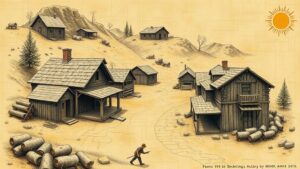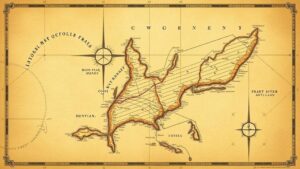Tracing Early Horse-Drawn Carriage Manufacturing Sites for Frontier Tools
Tracing Early Horse-Drawn Carriage Manufacturing Sites for Frontier Tools
The evolution of horse-drawn carriages fundamentally transformed transportation and commerce during Americas westward expansion in the 19th century. This article investigates the manufacturing sites of horse-drawn carriages and their significance in producing frontier tools, analyzing specific locations, historical significance, and their remaining archaeological record.
Historical Context
Horse-drawn carriages were prevalent from the early 1600s until the advent of the automobile in the early 20th century. The introduction of these vehicles allowed for greater ease of movement across rural and frontier areas. Significant manufacturing centers emerged, notably in New England, Pennsylvania, and Ohio, where the craft of carriage making flourished.
- In 1820, the United States reported approximately 50,000 carriages, indicating a rising demand for horse-drawn transportation.
- By 1870, the figure had grown dramatically, with over 500,000 carriages produced in the United States.
Manufacturing Techniques and Tools
The manufacturing processes of horse-drawn carriages involved craftsmanship and specialized tools. Artisans utilized various techniques, including wood joinery and metalworking, to produce durable vehicles.
- Woodworking: Carriages were primarily crafted from hardwoods like oak and maple, chosen for their strength and durability. Techniques included mortise and tenon joints, which provided solid structural integrity.
- Metalworking: Blacksmiths played an essential role in carriage manufacturing, producing necessary metal parts such as axles and wheels. caulking of wooden wheels with iron bands helped to enhance durability.
Key Manufacturing Sites
Several key sites contributed to the carriage manufacturing industry. Understanding the historical significance of these locations sheds light on the production network that supported frontier expansion.
- Boston, Massachusetts: This city became a vital hub for carriage manufacturing by the mid-1800s, with notable companies like Smith & Smith, establishing a reputation for quality.
- Cincinnati, Ohio: Known as the Queen City, Cincinnati developed a robust carriage manufacturing industry, with annual production rates exceeding 10,000 units by 1880.
- Philadelphia, Pennsylvania: Home to the well-documented carriage maker Benj. H. Smith, Philadelphias manufacturers catered to both local and national markets, focusing on various carriage styles, including the popular surrey.
Archaeological Evidence
Archaeological excavations at sites of known manufacturing locations reveal insights into the production techniques and tools that defined the era. Sites such as those in Ohio and Pennsylvania have uncovered tool remains, manufacturing debris, and structural foundations of historical carriage shops.
- In 2010, a team of archaeologists excavating a site in central Ohio identified several tools, including chisels and saws, which were integral to the carriage-making process.
- Also, remnants of wooden frames indicate the scale of production and the variety of carriage styles produced at these sites.
Real-World Applications and Significance
The findings from these manufacturing sites not only enhance our understanding of historical transportation technologies but also serve modern applications in heritage conservation and craftsmanship revival. Knowledge of authentic manufacturing practices informs restoration efforts and can guide contemporary artisans or hobbyists interested in traditional carriage making.
Conclusion
Tracing the early horse-drawn carriage manufacturing sites provides valuable insights into the historical and practical aspects of frontier tools. By examining the craftsmanship and production networks, we gain a deeper appreciation for the innovations that facilitated Americas westward expansion. Future research could focus on the economic impact of these industries on local communities and the social dynamics within carriage-making guilds.
Ultimately, understanding these historical manufacturing sites sheds light on the broader narrative of American industrialization and sets the stage for continued exploration into the material culture of the frontier.



